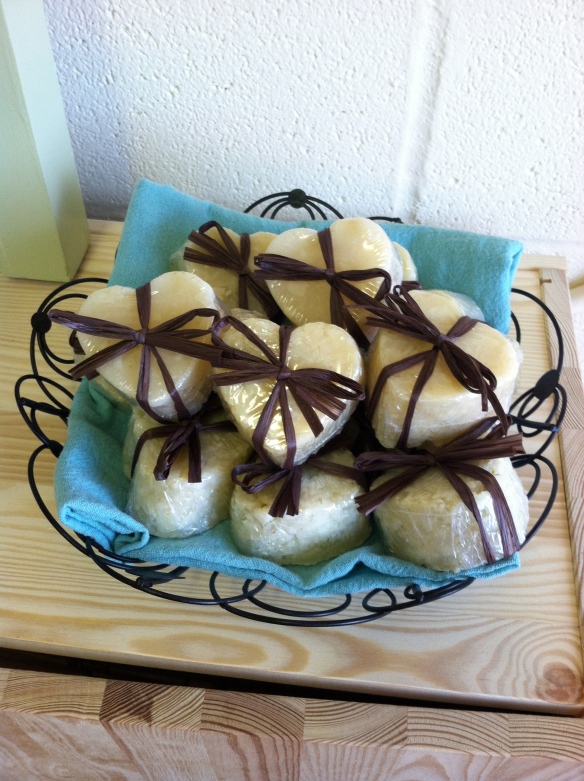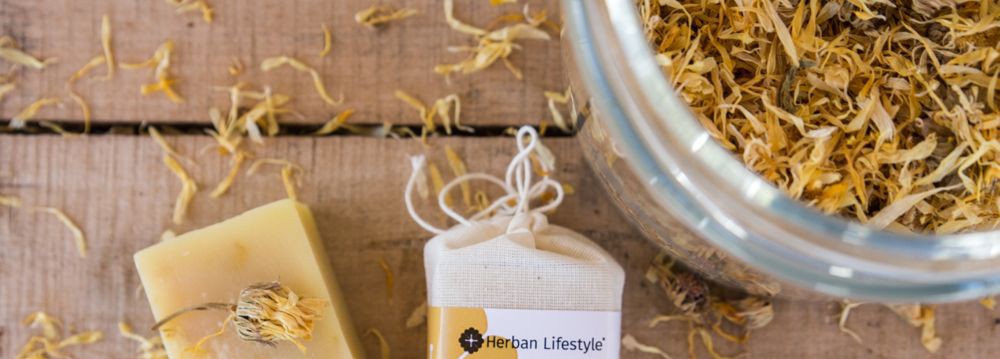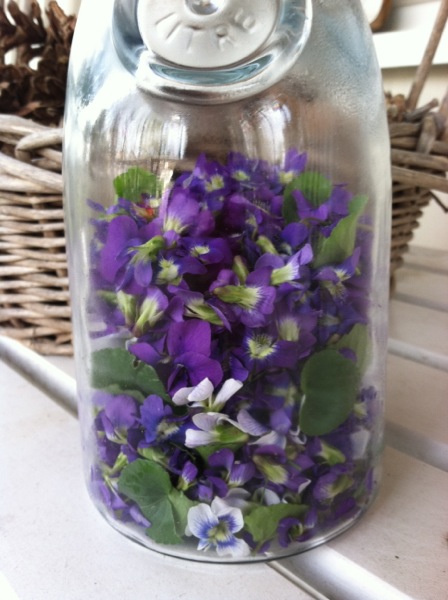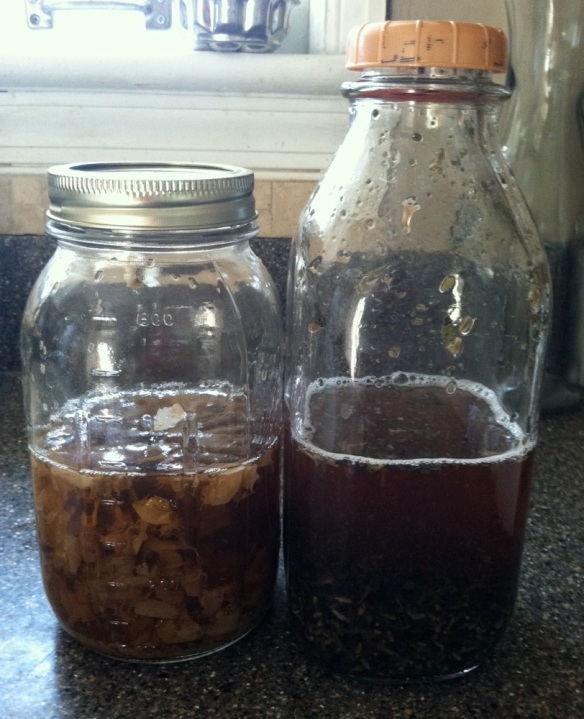
The following post is by Herban Lifestyle Outreach and Operations Coordinator, Lisa Seyfried.
Here in the Herban Lifestyle Workroom, we have lots of bags of soap ends and pieces sitting around, waiting for us to do some wonderful with them. I did some research on how to rebatch our soap – ‘rebatch’ means to basically melt down the soap and re-mold it as something new – and found a ton of information. Site after site told me different ways to rebatch, each site claiming their method was the best.
In the end, I picked two recipes that were fairly close, combined them into my own method, and got to work experimenting.
 My first batch turned out great! It melted down really well, it molded really well, and it looks really pretty.
My first batch turned out great! It melted down really well, it molded really well, and it looks really pretty.
 My second batch didn’t turn out quite so well. It’s a little lumpier, a little cracked, and just not as pretty looking. I am chalking this up to attempting to double the recipe and the soap not liking that.
My second batch didn’t turn out quite so well. It’s a little lumpier, a little cracked, and just not as pretty looking. I am chalking this up to attempting to double the recipe and the soap not liking that.
I do think that this recipe will turn out well again if I keep it in small quantities. The first batch was enough for three heart soaps, and the second batch made enough for five heart soaps.
To make rebatched soap:
You will need a glass measuring cup, or other microwave safe bowl, grater, your soap, 1/4 cup of water. 
1. Grate 4 cups of soap in a glass or microwave safe container. The smaller pieces the soap is in, the better it will melt. 
2. Add ¼ cup of water to the grated soap. Don’t stir it in yet.
3. Microwave for 2 min and stir. Repeat this process until the soap becomes slightly translucent and takes on the consistency of mashed potatoes.
4. Glob into mold with a spoon. Fill to the top, then bang the mold on the counter to get all the air bubbles out. Then squish the soap down with your fingers (you might want to wear gloves for this) to make sure the soap gets into all corners of the mold.
5. Cover the mold with a towel or cloth and let sit for 24 hours.
6. Unmold after 24 hours, let sit out for one week to cure. One week is probably more time than the soap needs to cure, but just to be safe, I’d go with one week.
This is the rebatch method that worked best for me. I have a feeling that everyone has their own method that works for them, with whatever kind of soap they are rebatching. I’d really like to try adding some essential oils or some pigments in my next batch! Have you rebatched any soap? What method did you use?




















 Boil the water. Then make an infusion by pouring the water over the violet flowers and leaves in a glass or ceramic container. Cover and let stand for 1 hour (the closed jar keeps the water-soluble vitamins from escaping in the steam). Strain out the flowers and you will have a beautiful purplish-blue liquid.
Boil the water. Then make an infusion by pouring the water over the violet flowers and leaves in a glass or ceramic container. Cover and let stand for 1 hour (the closed jar keeps the water-soluble vitamins from escaping in the steam). Strain out the flowers and you will have a beautiful purplish-blue liquid.




 Place your herbs and vinegar in a clean glass jar, cap tightly. Label the jar with your herbs and the date. Allow to infuse for 6 weeks in a cool dark place, shaking the jar daily.
Place your herbs and vinegar in a clean glass jar, cap tightly. Label the jar with your herbs and the date. Allow to infuse for 6 weeks in a cool dark place, shaking the jar daily.

















